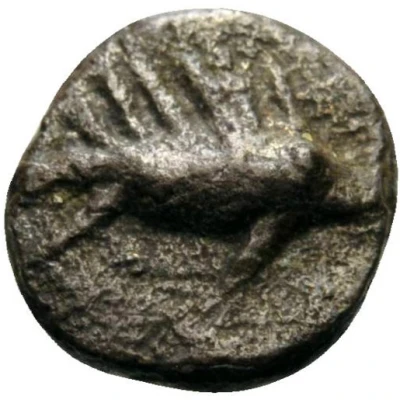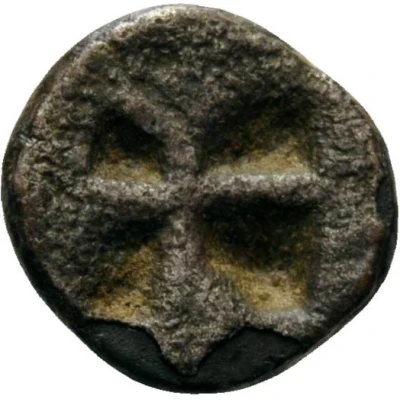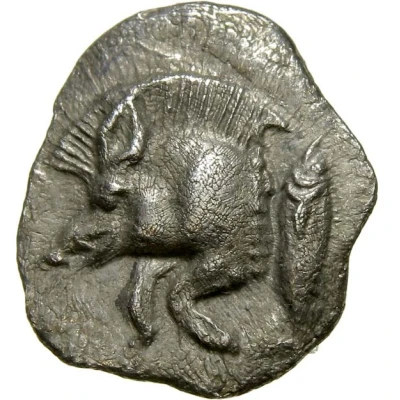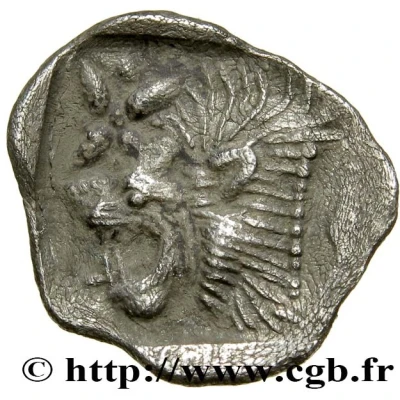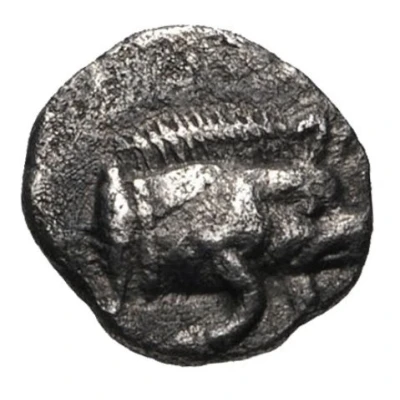
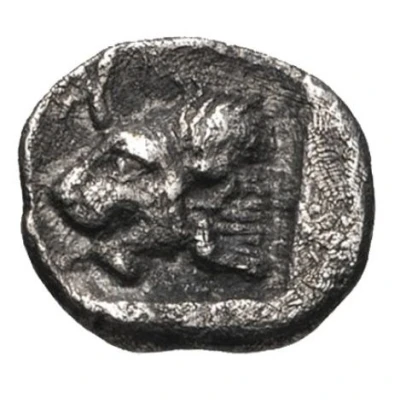

© PA-Engineer (CC0)
Hemiobol 480 BC - 400 BC
| Silver | 0.2 g | 7 mm |
| Issuer | Kyzikos (Mysia) |
|---|---|
| Period | City administration (600 BC - 1 AD) |
| Type | Standard circulation coin |
| Years | 480 BC - 400 BC |
| Value | Hemiobol (1⁄12) |
| Currency | Drachm (500-27BC) |
| Composition | Silver |
| Weight | 0.2 g |
| Diameter | 7 mm |
| Shape | Round (irregular) |
| Technique | Hammered, Incuse |
| Orientation | Variable alignment ↺ |
| Demonetized | Yes |
| Updated | 2024-10-10 |
| Numista | N#324073 |
|---|---|
| Rarity index | 83% |
Reverse
Head of roaring lion left, retrograde K to upper left; within incuse square.
Script: Greek
Lettering: K
Unabridged legend: Κύζικος
Translation: Kyzikos
Comment
There are dozens of variants in this type, but the main distinction seems to be the facing of the boar.
Interesting fact
The Hemiobol coin from Kyzikos (Mysia) was used as a form of currency in ancient Greece and has a unique design, featuring the head of a mythical creature called a Satyr on one side and a quadripartite incuse on the other.
Price
| Date | Mintage | VG | F | VF | XF | AU | UNC |
|---|---|---|---|---|---|---|---|
| ND (480 BC - 400 BC) | - | - | - | - | - | - |
Values in the table are based on evaluations by sales realized on Internet platforms. They serve as an indication only for Hemiobol (480 BC - 400 BC) coin.
